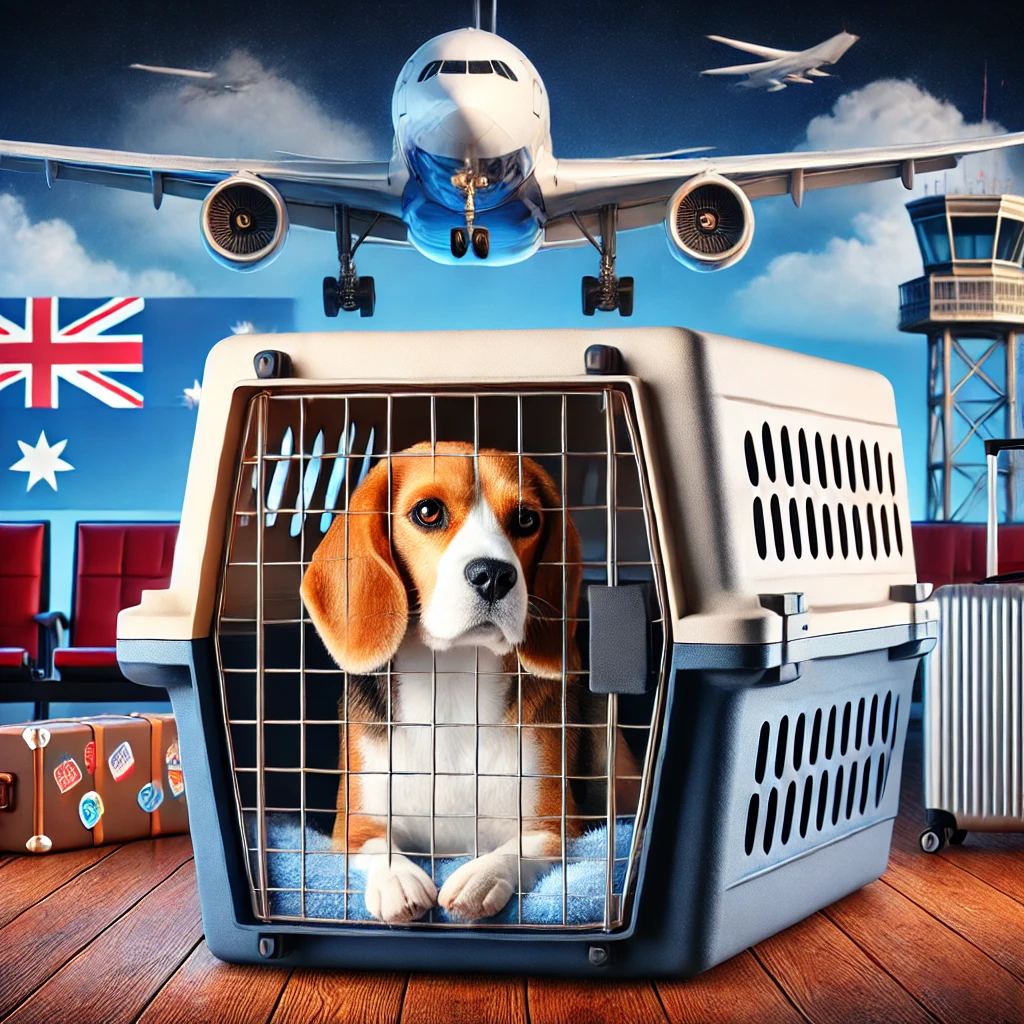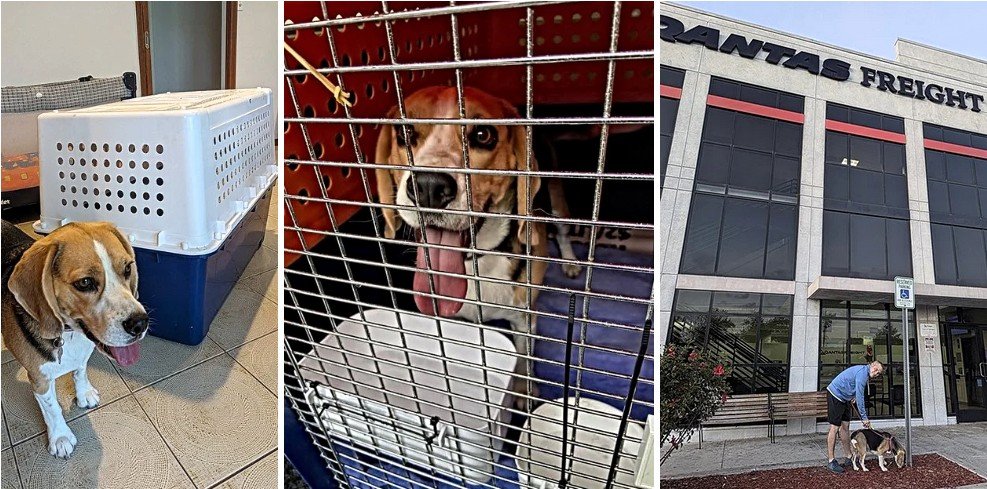If you’re planning on flying your dog from the USA to Australia, you’ll soon discover how complex the process can be. One of the most common concerns for pet owners is whether their dog’s crate meets airline and international travel standards. The last thing you want is to arrive at the airport only to find your crate doesn’t comply with airline regulations.
When we recently started preparing for our beagle Sniffy’s flight from LAX to Melbourne, we encountered some uncertainty when it came to crate requirements. After reaching out to various sources, including Qantas and pet freight companies, we received mixed responses that left us a bit frustrated and unsure. In this post, I’ll share our story and the research we conducted to clear up the confusion, along with recommendations on selecting the right crate—such as the SportPet Designs Plastic Kennel, which might just be the perfect solution for your dog’s flight.
Initial Research: The Crate Dilemma
Our journey started with an email to Australian dog freight companies, asking if a specific dog crate we were considering would be suitable for our beagle’s flight. We were looking at the SportPet Designs Plastic Kennel, an XXL model with metal bolts and removable wheels. It seemed sturdy and airline-friendly, but we wanted to be sure.
The freight company responded with:
“Crate seems ok, as long as it is a rigid hard-sided kennel large enough for the pet to stand with head clearance, a non-collapsible kennel and approved for air transportation.”
They included a link to the IATA (International Air Transport Association) website, which set out some basic guidelines. The problem? Their response wasn’t a definitive “yes,” leaving us wondering if the crate was truly approved by Qantas and met the exact criteria for an international flight to Australia.
The Uncertainty: Qantas’ Vague Response
We didn’t stop there. To avoid any last-minute surprises, we decided to email Qantas directly. After all, they’re the airline we’d be flying with, and their approval is what truly matters. Unfortunately, the response we received was just as vague as the freight company’s:
“The crate seems ok, but it must meet IATA standards, be rigid, have metal bolts, and provide head clearance for the dog.”
While this repeated what we already knew, it didn’t give us a definitive answer about the specific model of crate we were looking at. We now had two responses that told us what to look for but didn’t guarantee that our crate met those standards. As you can imagine, this left us a little frustrated.
Self-Research: Does the SportPet Designs Kennel Meet the Standards?
At this point, we decided to do our own research to figure out if the SportPet Designs Plastic Kennel XXL would work. Here’s what we learned:
- IATA Compliance: The crate is marketed as being IATA-approved, meaning it should meet the international standard for pet transportation.
- Rigid and Hard-Sided: The crate is non-collapsible and made of hard plastic, which satisfies the requirement for international flights.
- Metal Bolts and Removable Wheels: The crate includes metal bolts, which are essential for securing the kennel. Additionally, the wheels are removable, which is important because airlines typically don’t allow crates with attached wheels.
- Size and Space: It’s crucial to ensure your dog has enough space to stand, turn around, and lie down comfortably. We took measurements of Sniffy to ensure the crate provided enough head clearance, as required by IATA and Qantas.
Seeking Further Confirmation
Even with all of this information, we still felt a bit uncertain. Would Qantas specifically approve this model for Sniffy’s journey from LAX to Melbourne? To ensure full compliance, we realized the best course of action was to contact the airline directly again, armed with the information from our research.
Tips to Ensure Your Dog Crate is Compliant
If you’re in a similar situation, here are some steps to ensure your crate is suitable:
- Check IATA Guidelines: Start by familiarizing yourself with the IATA guidelines. These are the minimum standards for any crate used in international air travel.
- Measure Your Dog: Make sure your dog has enough room to stand, turn around, and lie down comfortably in the crate. Double-check this against the crate dimensions before purchasing.
- Ask the Airline: Don’t hesitate to reach out to your airline. Provide them with detailed information about the crate, including its dimensions and features (such as the removable wheels and metal bolts), and ask for confirmation.
- Be Persistent: If you don’t get a definitive answer, follow up with more specific questions until you have confirmation.
- Pet Freight Companies: Consider reaching out to pet relocation companies, as they often have extensive knowledge of airline policies and can provide additional peace of mind.
Our Recommendation: SportPet Designs Plastic Kennel
Through our research, we concluded that the SportPet Designs Plastic Kennel XXL was our contingency choice if we could not get a PP60 or PP70 crate in time. Although the SportPet crate could be quickly delivered by Amazon, it was at a reasonable price and there was a few available on Facebook Marketplace; but, we decided to stay with what we knew, and that was the QANTAS approved PP range; Sniffy had initially flown from Australia to the UK in a PP70.
If you’re looking for a crate that provides comfort and safety for your pet, we highly recommend checking out the SportPet Designs Plastic Kennel for your next trip. Just remember to do your due diligence and confirm with the airline that your specific crate meets their requirements and you are comfrotable with the choice.

Ensuring your dog’s crate is suitable for international travel can be a stressful process, but by doing your research and reaching out to the airline, you can avoid any surprises at the airport. Safe travels for you and your furry companion!





